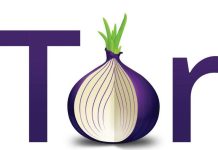Top Tips on Writing Resume That Match Employer Job Description
The skills section of your resume plays a crucial role in showcasing the abilities that set you apart as a strong candidate. Employers often focus on this part to quickly assess whether you’re a good fit for the position and decide who moves forward in the hiring process. That’s why it’s essential to tailor this section carefully for each specific role you apply for. How you present your skills can significantly influence your chances of landing an interview.
So, where should you begin when deciding which skills to include on your resume? Professional resume writers suggest that one should start by identifying the key qualifications listed in the job description and match them with your strongest, most relevant abilities.
1. Introduction: Why Do Skill-Driven Resumes Matter?
Recruiters spend an average of just 7.4 seconds scanning a resume before deciding if a candidate is a good fit. That means your resume must immediately convey your value.
According to NACE’s Job Outlook 2024 report, recent graduates should look beyond highlighting a high GPA and instead focus on the skills and qualities they’ve developed through coursework, internships, and practical experiences.
A common mistake many job seekers make, specially in Atlanta, as told by resume writing services Atlanta is listing responsibilities rather than demonstrating impact. For example, instead of simply stating “Managed social media accounts,” a stronger, skills-focused statement would be:
“Developed a social media strategy that boosted engagement by 45% in six months.”
This shift in focus helps demonstrate not just what you did, but the value you delivered.
2. Know Your Audience
Hiring managers focus heavily on your skill set, so it’s essential to highlight the most relevant and impactful skills on your resume. Tailor your content by carefully analyzing each job description.
How to Align Your Resume with Employer Expectations:
- Identify Key Skills & Priorities: Look for repeated keywords and must-have qualifications in job postings.
- Research Company Culture: Check the organization’s website and social channels to understand their tone and values.
- Use the Right Language: Mirror the company’s terminology. If they use “team leadership,” avoid substituting it with “people management.”
Tailoring your resume in this way helps it resonate with recruiters and ensures it passes through Applicant Tracking Systems (ATS) that scan for relevant keywords.
3. Skills Inventory: What Do You Bring to the Table?
Employers seek a mix of hard, soft, and transferable skills that demonstrate your full range of capabilities.
- Hard Skills (Technical Proficiencies)
Examples: Python, SEO, Adobe Creative Suite, SQL, Financial Forecasting - Soft Skills (Interpersonal & Personal Traits)
Examples: Communication, Adaptability, Emotional Intelligence, Collaboration - Transferable Skills (Applicable Across Roles)
Examples: Project Management, Critical Thinking, Problem-Solving
How to Identify Your Strongest Skills:
- Reflect on past job performance and achievements.
- Ask mentors, managers, or peers for feedback.
- Use self-assessment tools like CliftonStrengths or Myers-Briggs.
Tip: Prioritize high-demand and role-specific skills in your resume to stand out.
4. From Skills to Success Stories: Show, Don’t Just Tell
Listing skills is not enough as advised by professional resume writers Denver —you need to show how you’ve used them to create impact. The STAR Method helps structure your achievements clearly:
Situation – What was the context?
Task – What were you responsible for?
Action – What did you do?
Result – What was the measurable outcome?
Example:
- Weak: “Led a marketing campaign.”
- Strong: “Developed and executed a social media campaign that increased customer engagement by 50% by analyzing user behavior and optimizing content strategy for a growing e-commerce brand.”
Tip: Start each bullet point with a strong action verb (e.g., spearheaded, implemented, improved).
5. Customize, Don’t Generalize
A generic resume rarely gets results. Customizing your resume and cover letter for each application shows attention to detail and genuine interest in the role.
How to Personalize Effectively:
- Summary Statement: Tailor it to echo the job description.
- Experience Section: Emphasize roles most aligned with the target position.
- Skills Section: Match listed skills to those emphasized in the job ad—authentically.
Tip: Keep a master CV that lists all experiences, then create tailored resumes for each application using relevant sections.
6. Speak Their Language: Keywords & ATS Optimization
Many employers use Applicant Tracking Systems to screen resumes. Without the right keywords, even strong candidates may get filtered out.
How to Optimize for ATS:
- Mirror the Job Description: Use the exact phrases used in the posting.
- Provide Context: ATS tools look for keywords in context, not just repeated buzzwords.
- Stick to Standard Job Titles: Use conventional role names to ensure clarity.
- Format Matters: Save as PDF or Word—avoid overly designed templates that may not parse properly.
7. Keep It Clear, Clean, and Focused
Visual layout matters just as much as content. A well-formatted resume encourages hiring managers to engage with your experience.
Best Practices for Formatting:
- Font & Size: Use legible fonts (Arial, Calibri) at 10–12 pt.
- White Space: Avoid dense blocks of text—make it easy to skim.
- Bullet Points: Break down responsibilities and achievements concisely.
- Consistent Style: Use uniform date formats and alignment.
Tip: Keep your resume one page if you have under 10 years of experience; max two pages for seasoned professionals.
8. Bonus Tips: What Else Stands Out to Employers?
Enhance your resume with elements that add depth and dimension:
- Certifications: e.g., Google Ads, PMP, AWS Certified Solutions Architect.
- Tech Tools: Mention platforms, languages, and systems you know.
- Metrics-Driven Achievements: Use numbers to quantify your impact.
- Professional Links: Include a LinkedIn profile, GitHub, or portfolio.
Conclusion: A Resume That Gets You Noticed
A skills-driven resume can distinguish you from the competition by clearly showing your value and impact.
Key Takeaways:
- Employers want results, not just responsibilities.
- Tailor your resume to the specific job and company.
- Use ATS-friendly formatting and language.
- Highlight a balance of hard, soft, and transferable skills.
- Support your claims with metrics and accomplishments.
Your resume is your personal marketing pitch—make it count. When thoughtfully crafted, it tells a compelling story that aligns with what employers are really looking for.










